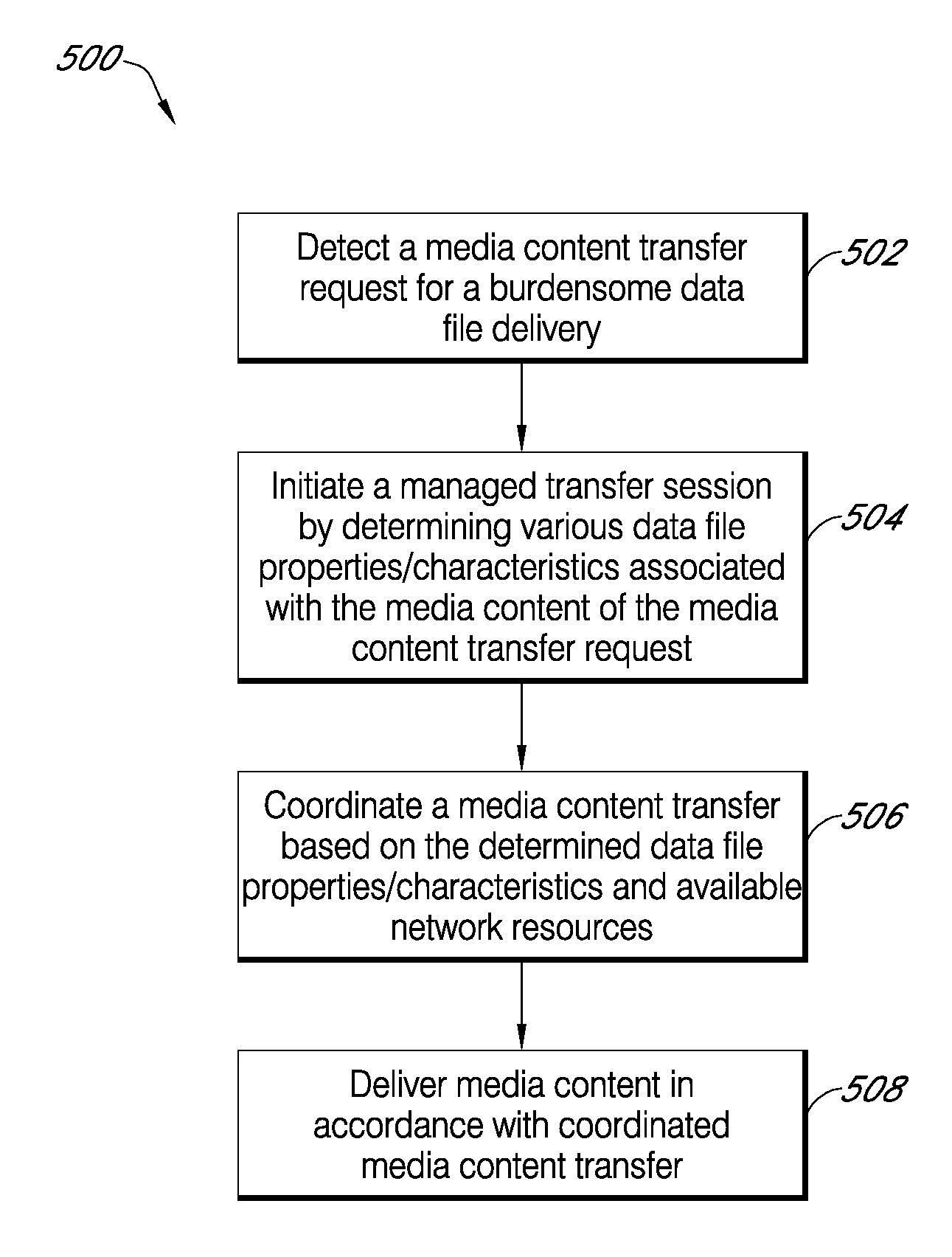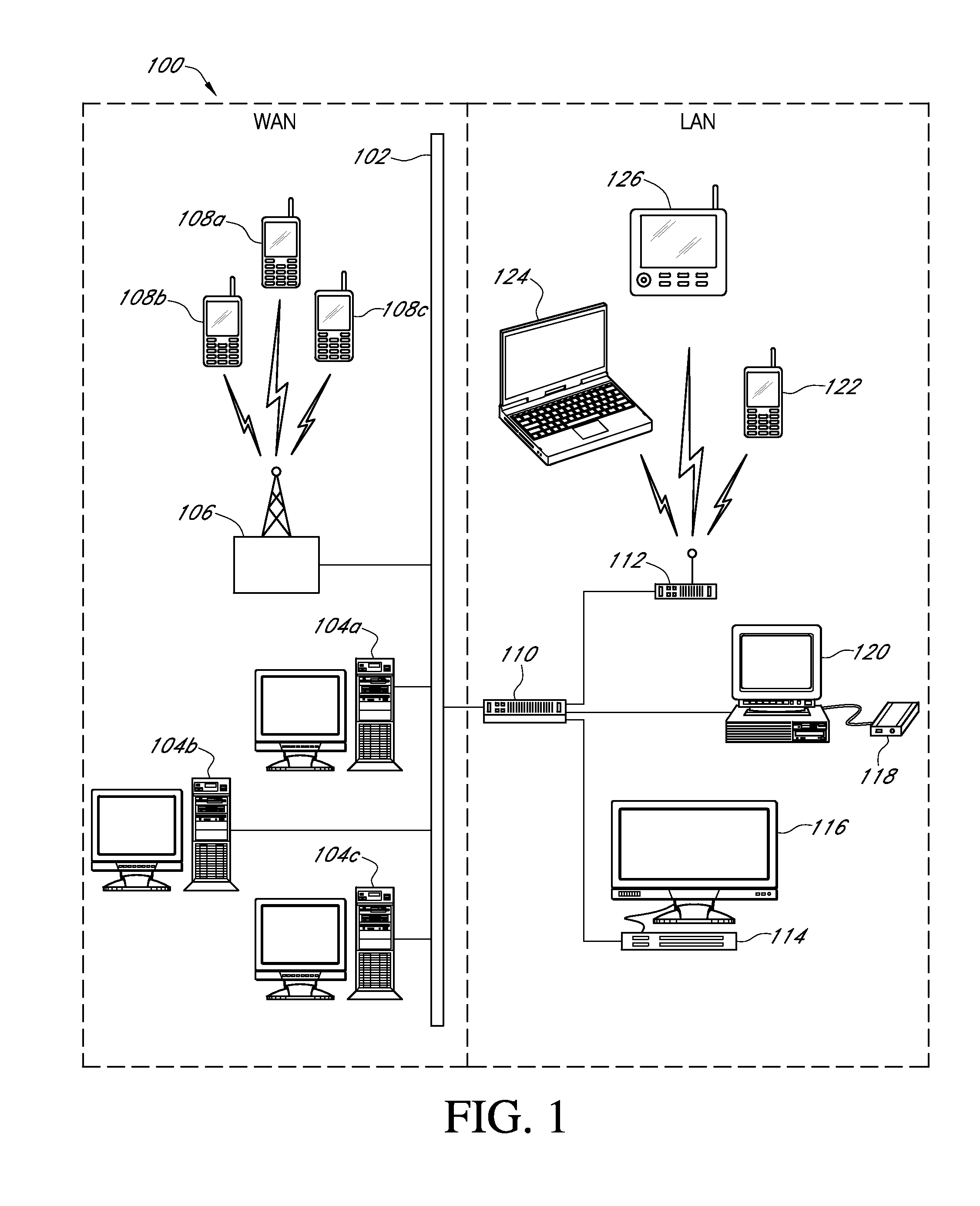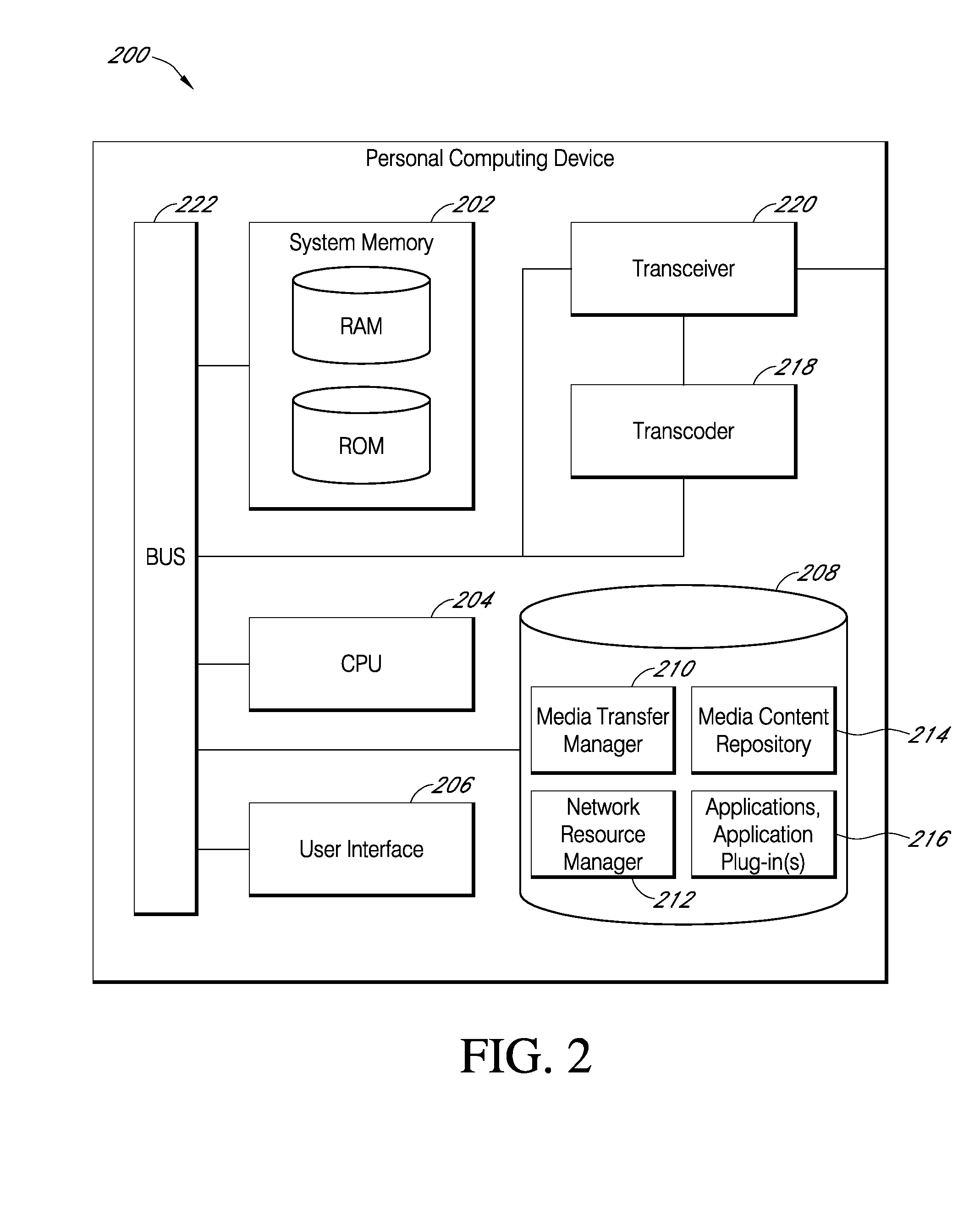Systems and methods for automatic detection and coordinated delivery of burdensome media content
a technology of media content and automatic detection, applied in the field of automatic detection and managed transfer of burdensome media content, can solve the problems of affecting the quality of service of the network, the speed of data transmission is much slower, and the quality of experience of the user is deteriorated, so as to achieve the effect of reducing the cost of the network
- Summary
- Abstract
- Description
- Claims
- Application Information
AI Technical Summary
Benefits of technology
Problems solved by technology
Method used
Image
Examples
Embodiment Construction
[0032]In accordance with an exemplary embodiment of the present invention, FIG. 1 illustrates a networked computing system 100 including various wireline and wireless computing devices that may be utilized to implement any of the media content detection / determination and coordinated delivery processes associated with various embodiments of the present invention. The networked computing system 100 may include, but is not limited to, a group of remote server devices 104a-c, any one of which may be associated with various Media Content Providers (MCPs) that can provide media content distribution services to various networked clientele or various Access Provider Devices (APDs, e.g., proxy servers) that can facilitate split, managed delivery of media content in accordance various coordinated delivery processes of the present invention; a data communications network 102 (including both Wide Area Network (WAN) and Local Area Network (LAN) portions); one or more remote client devices 108a-c...
PUM
 Login to View More
Login to View More Abstract
Description
Claims
Application Information
 Login to View More
Login to View More - R&D
- Intellectual Property
- Life Sciences
- Materials
- Tech Scout
- Unparalleled Data Quality
- Higher Quality Content
- 60% Fewer Hallucinations
Browse by: Latest US Patents, China's latest patents, Technical Efficacy Thesaurus, Application Domain, Technology Topic, Popular Technical Reports.
© 2025 PatSnap. All rights reserved.Legal|Privacy policy|Modern Slavery Act Transparency Statement|Sitemap|About US| Contact US: help@patsnap.com



